Creating our first Game
- John Scerri
- Oct 12, 2016
- 4 min read
In the first lesson we were asked what we understand by the word play. We stated that play is something that has an objective, rules and challenges. We only mentioned those so not to be specific. A particular game then could also have immersion, fun to play and rewards.
The lecturer showed us several quotes and we discussed about them to conclude that actually it is very hard to define what is a game and that there is no one definition of games. Especially today where games are continuously evolving.
So we said that these mentioned above are ‘Characteristics’ of a game, that usually you find while playing.
We were then assigned a home work to develop a small card game with a theme and a set of rules:
Get Out of the House
You do not need to use all of the cards in the game. N.B colours, or numbers (or j, q, k) might be metaphors for different things.
The game may be cooperative or competitive.
You may use a maximum of two other objects (e.g. coins, strings, figures, etc)
Game may be split in rounds.
Discuss the game in relation to at least two of the characteristics of play we mentioned in class.
(Lecturer)
The first thing I did was to make a list of the characteristics:
Objectives
Rules
Challenges
Immersion
Fun
Rewards
Then I started to remember what did I enjoy and what kept me immersed or engaged on to a game (Although this is subjective I believe that it applies for the majority). The most important aspects for me were fun, immersion, skill and interaction. Personally I don’t like games you win by chance. Therefore, I made a list of card games that I liked and involved skill with interaction. These where:
Snap (agility and reaction)
Pair two cards (memory)
I decided to choose snap since it’s fast passed game, to stay under 10min of game play, plus you are more unlikely to get distracted in a fast game since it is always demanding your attention and hopefully keep immersion.
Then I focused on the get out of the house theme. At first the initial idea was that you had to catch a curtain amount of energy before leaving the house to go to your destination. The player with most energy wins.
I created a list of energy cards and templates based on the theme.
Energy/Template cards:
Alarm Clock – switch off alarm to wake up in a good mood.
Shower - to feel clean and stronger.
Eat Breakfast – Gives you energy to confront the day
Smartphone - to keep you company when alone
Car Keys – to drive to your destination.
The templates existed so that you keep in sequence of the energy cards to get. If the card matches the template you attempt to take it, after that the templates is then switched with the next one until templates run out. But I realized that there was nothing different from snap except the cards themselves and the templates.
Instead of scraping the game, I decided to upgrade it since I liked the concept. I looked again at the characteristics and noticed that the reward was only you winning the game, and no extras during game play. Also the game was too fast and finished under 5min.
To amend that I introduced two lives for each player and set a rule that the game is playable between 2 to 4 players and that a dealer is needed. The dealer is to keep the players focused more on their game. The lives are to give a chance to the loser to get back on his feet. Apart from that I added an extra reward to the winner. The winner would get a “More Sleep” card where he goes to bed early and wakes up with more energy. To balance things out, since the winner would be in advantage, the loser gets to roll the dice and if they hot ‘4’ or greater, the player can pick a card from then counter attack cards.
A counter attack card can only be activated when the event is matching. For example, “Turn Off Alarm Clock” card can be countered with “Hide Alarm Clock” and after an opposing player has just snatched the card. You can no longer counter attack if the game is in progress or the event has changed. You can keep unused counter attack cards for another round if you do not get eliminated.
At this point the game seemed solid enough and working, yet it was very hard to play with numbers. I felt like losing immersion because of that. I decided to draw some cards myself. I searched for the standard playing card size and it was 2.5” x 3.5” (bicyclecards, 2016) which in metric is 63.5mm x 88.9mm and set my canvas to those dimensions.
After completing the cards, I had to determine how much cards will be in play from a standard 52 card game pack. For sure there were going to be 5 template cards. Then I added 10 counter attack cards. 10 so that there would be 2 of each card and if a player does not want to counter, another one can if they have the same card. For a strange reason I made a mistake and added 5 ‘More sleep’ cards, but while I’m writing this I realized that there can only be one winner and one can be taken during each round and returned back after the round. Anyway that left me with 32 cards. I decided that by 5 and the answer was 6.4. So I made 6 cards of each one to keep them equal.
The cards where then printed on an A4 white colored cardboard. I tested the game and it seemed to be working fine, even the number of cards drawn from the deck was balanced.
At this point I wrote the rules and information about the game.
Link to rules and information: Get Out of the House v_1 Info

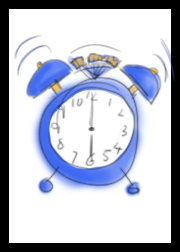



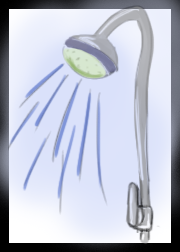







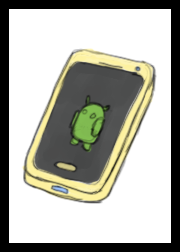

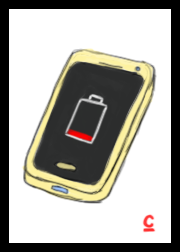



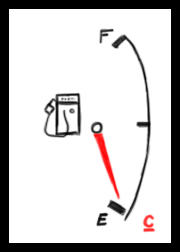



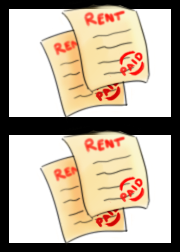




Comments